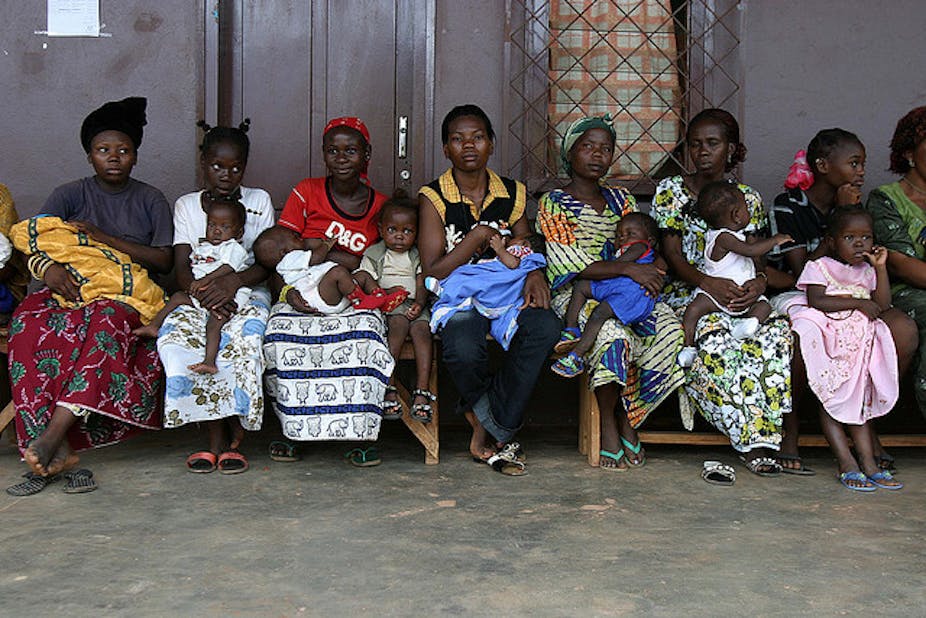Twenty years after his discovery that peptic ulcers were caused by a bacteria called Helicobacter pylori, Nobel Prize winner Barry Marshall is using the same bacteria as the base of an edible vaccine that has the potential to eradicate diseases in the developing world.
He answers some questions about the vaccine here.
How did your vaccine development begin?
Researchers have been trying to develop a vaccine against the Helicobacter bacteria itself since the 1990s.
By the early 2000s it became evident that Helicobacter was special in some way: it had the ability to take control of the immune system (or keep the immune system suppressed) so you couldn’t raise your immune activity high enough to eradicate the Helicobacter bacteria.
I then came across some researchers who had problems developing an AIDS vaccine because they couldn’t give enough boosters or enough vaccine to achieve antibody levels high enough to protect against, or eradicate, HIV.
So I thought, because Helicobacter can stay in your stomach all your life and you react against it with antibodies, maybe you could put a HIV vaccine inside Helicobacter. If you could leave it in the stomach long enough – months or years – perhaps you would be able to raise the antibody levels high enough to protect you from HIV.
At that point, I decided this was an important thing to work on because you could potentially put any vaccine inside Helicobacter. And the beauty is you could simply drink it.
The process would go something like this: you swallow the live Helicobacter, which has been modified to contain live DNA from, say, HIV or an influenza virus. It would then colonise your stomach and you’d eventually be immune to whatever we had cloned into the Helicobacter.
Are there any risks of using the live Helicobacter bacteria?
Half of the world’s population is infected with Helicobacter and appear normal or don’t even know they have it.
On the other hand, if you have Helicobacter in your body, you can develop peptic ulcers and in the longer term you have an increased risk of developing stomach cancer.
But there are different strains of Helicobacter. The strain that increases the risk of cancer contains a dangerous toxin called CagA. Strains can be selected which have very weak, or zero, CagA.
What stage are you at in the vaccine development?
We’ve spent a lot of time and effort screening Helicobacter strains to find which ones we could potentially use for vaccines.
From the five candidate strains we tested last year, we think we have a strain that’s temporary, a strain that’s permanent and a strain that has virtually no symptoms.
These are our criteria so we’re optimistic we will be able to use them to deliver a vaccine.
All going well, how far away would the vaccine be?
I’d expect that two years from now we will have a working vaccine. At that point, we would have to scale up the testing.
So you wouldn’t be able to have a vaccination for the flu in two years, it would be another several years after that.
What impact do you expect this vaccine delivery model will have on developing nations?
The beauty of having a live-delivery bacterial system is that you can scale it up.
It’s very much like a brewery process: you take a starter culture, keep it at body temperature, stir it, bubble some gas through it, and after a week you have a million doses. That’s all you have to do.
You can make a thousand doses in one millilitre. If you have a litre of it, you could make a million doses. And that’s being conservative.
You can fit this technology into a space the size of a cubic metre. So theoretically you could ship a vaccine factory to the middle of Africa, run it on solar power and connect it to the Internet with a cell phone.
You’d just need someone to keep an eye on it and a week later local people would have their vaccine.
Each time they want to make a new vaccine we would just send a starter culture out. You could use the same Helicobacter strain to deliver all different vaccines, so you wouldn’t have to keep reinventing the wheel.
If a vaccine for a new strain of pandemic flu was required, we could probably have that ready to go in 12 weeks.
A lot of technology goes into the development of the product but this is done in a big operation back at the home base. To deliver the vaccine into a developing country is a minor operation.
Instead of having very expensive ($10-20 million) production facilities for your vaccines, you’d have something that’s inexpensive.
So sadly, if this works, we will do away with quite a lot of expensive technology supporting the vaccine industry. If you make vaccines a simple fermentation process, you don’t need all that technology. That’s one of the reasons why the price comes down.
What impact do you expect it will have locally?
Currently, the best case scenario with a needle-based vaccination program is that you achieve vaccination in half the adult population – it’s hard to get more than that.
But if it’s a food product and you can see it on the shelf in your pharmacy, or in the supermarket aisle next to the yoghurts and the Yakult, then you would be more likely to self administer your flu vaccine.
It might cost you an extra $10 and for, let’s say, a six-pack of vaccine yoghurt. It would just be the normal thing you did every year – one year you’d take the lime flavour and the next, when the flu virus changes, you might take the apricot.
With this product, we could approach 100% vaccination.
How has the pharmaceutical industry responded?
My investors aren’t big vaccine or pharmaceutical companies that have invested in existing technologies.
Unsurprisingly, they’re not excited about our technology, yet.

